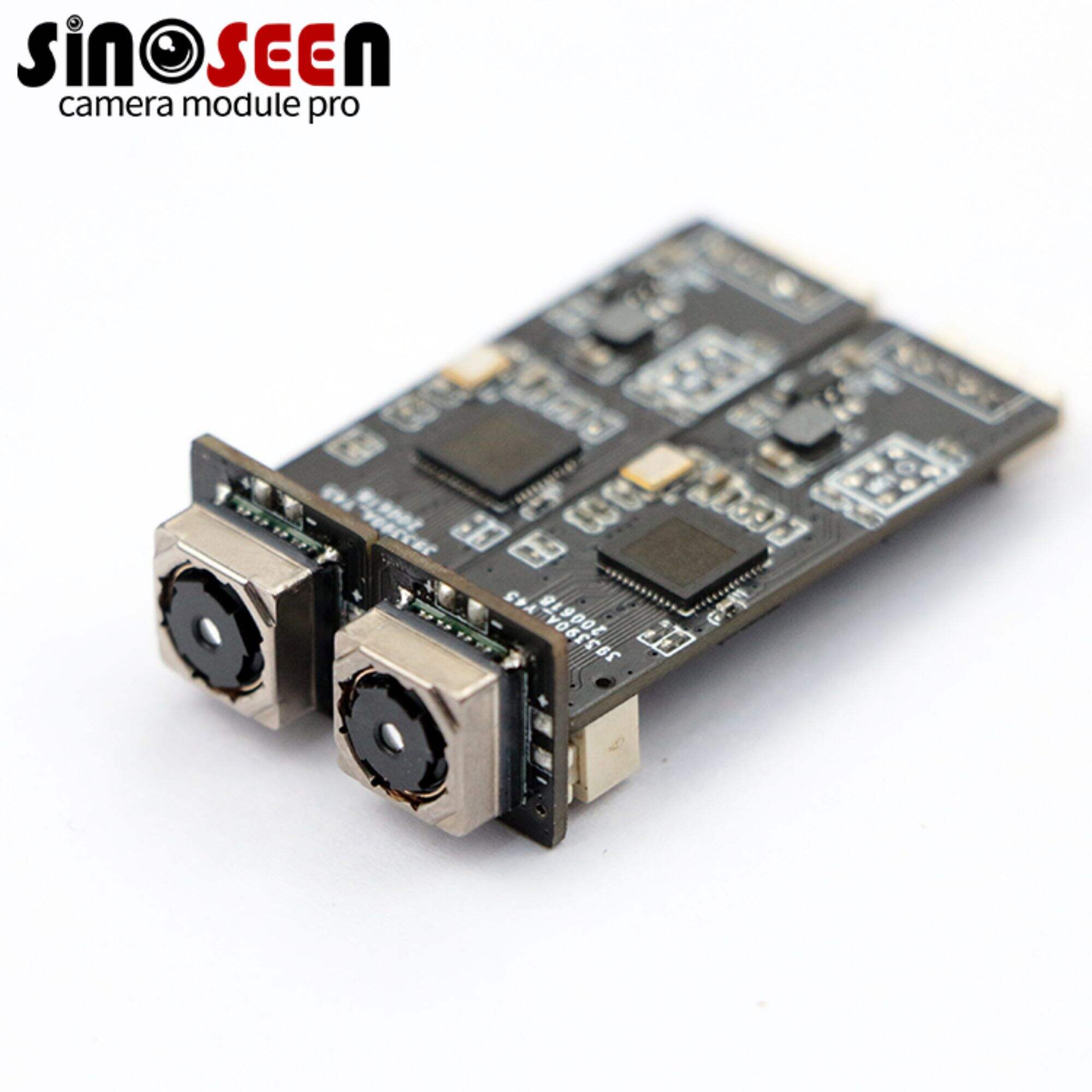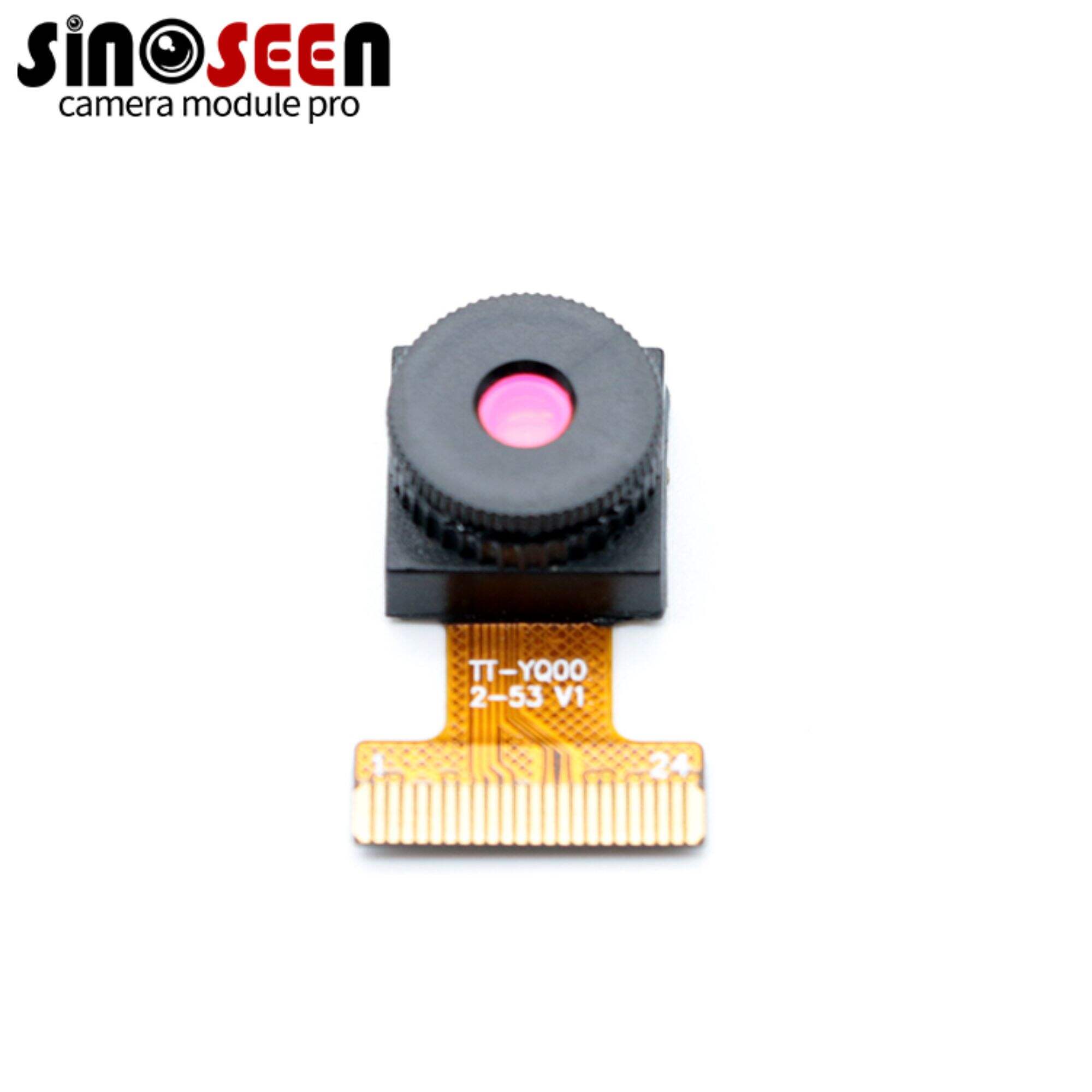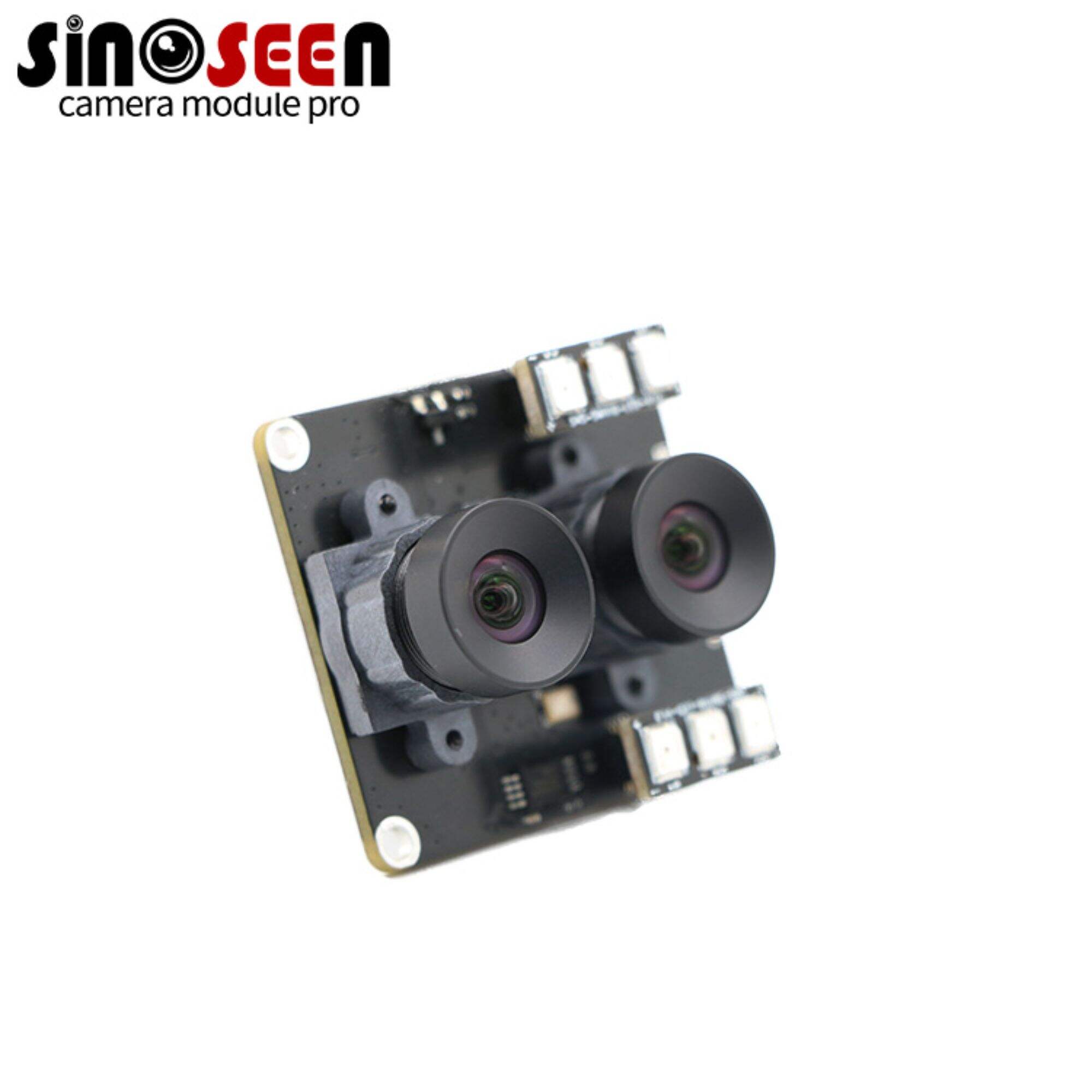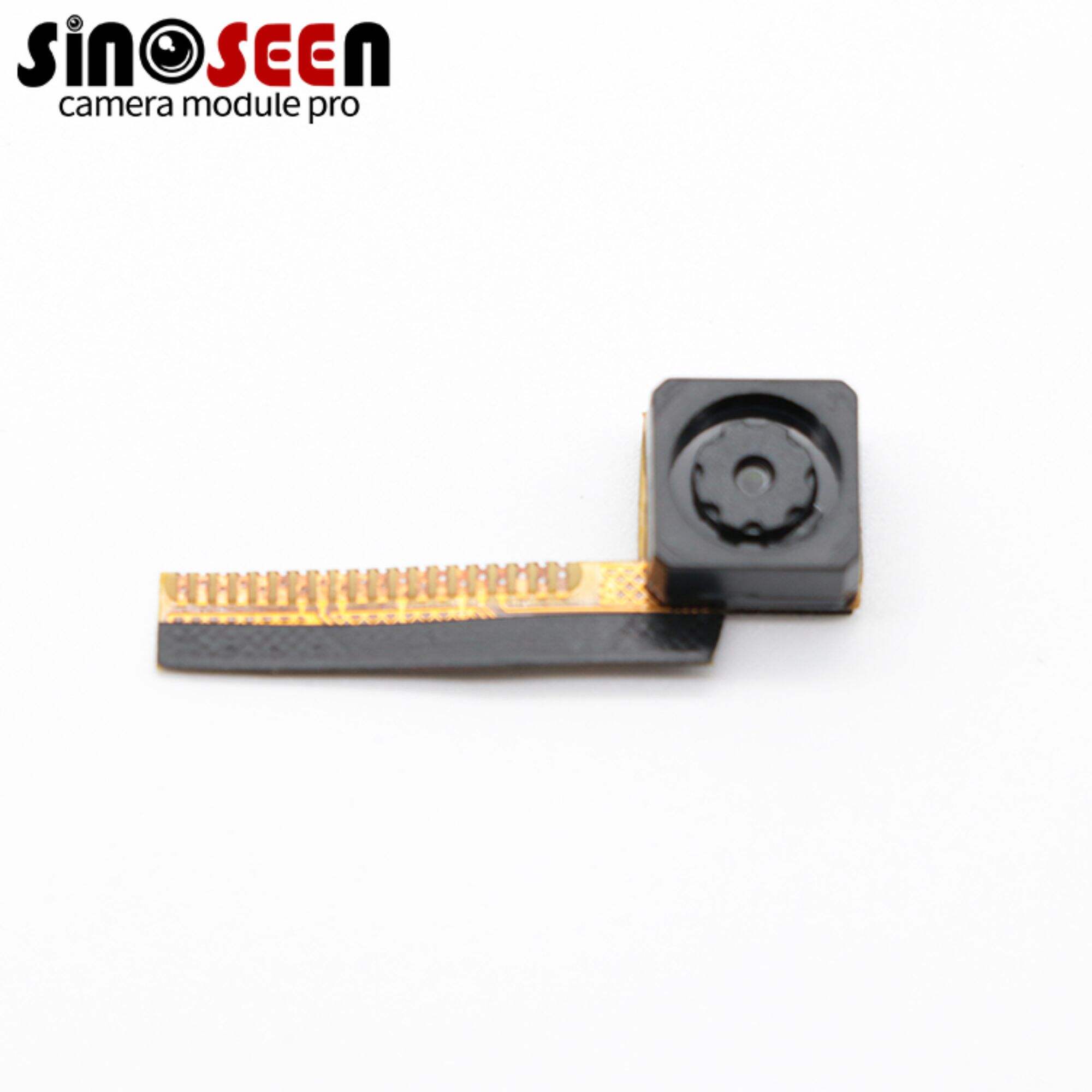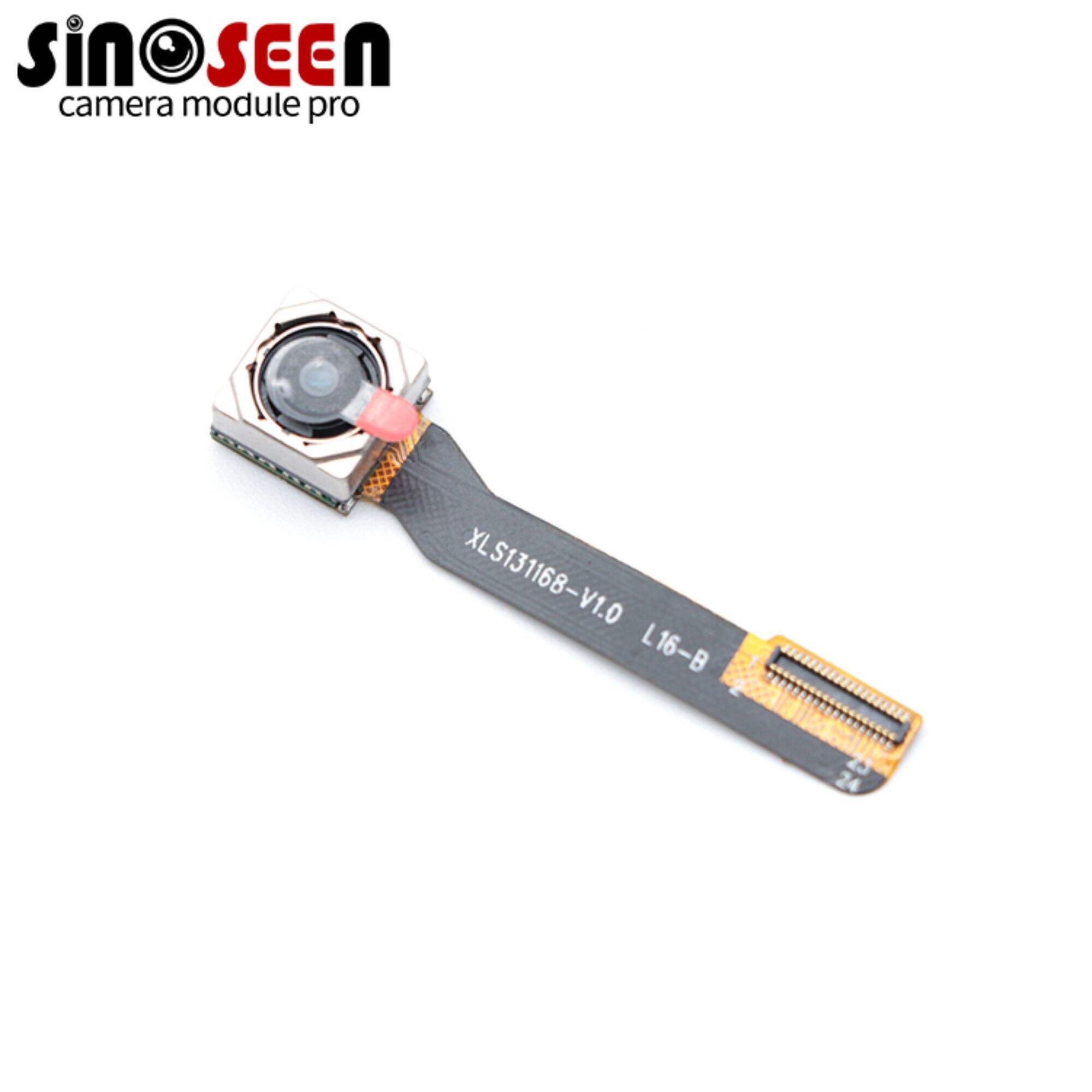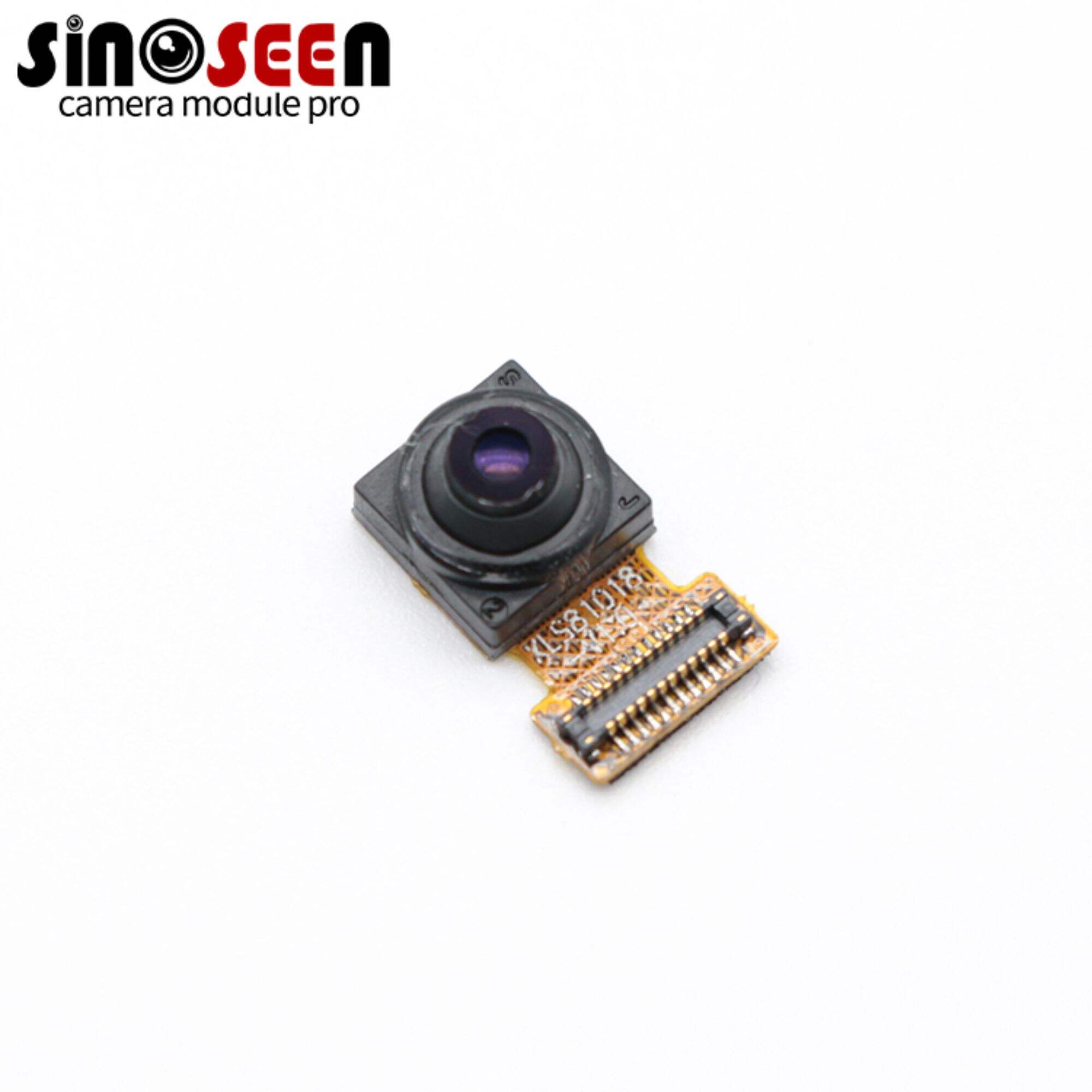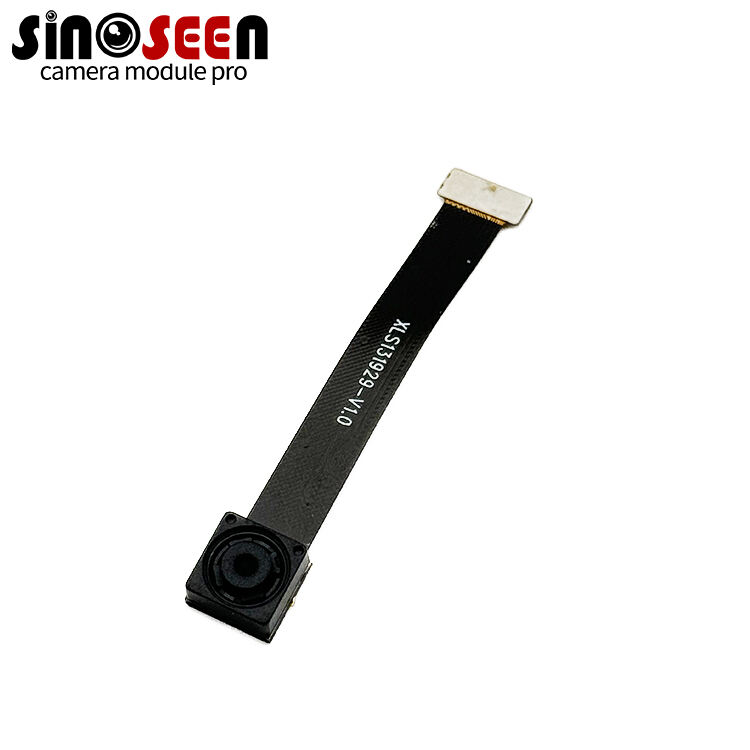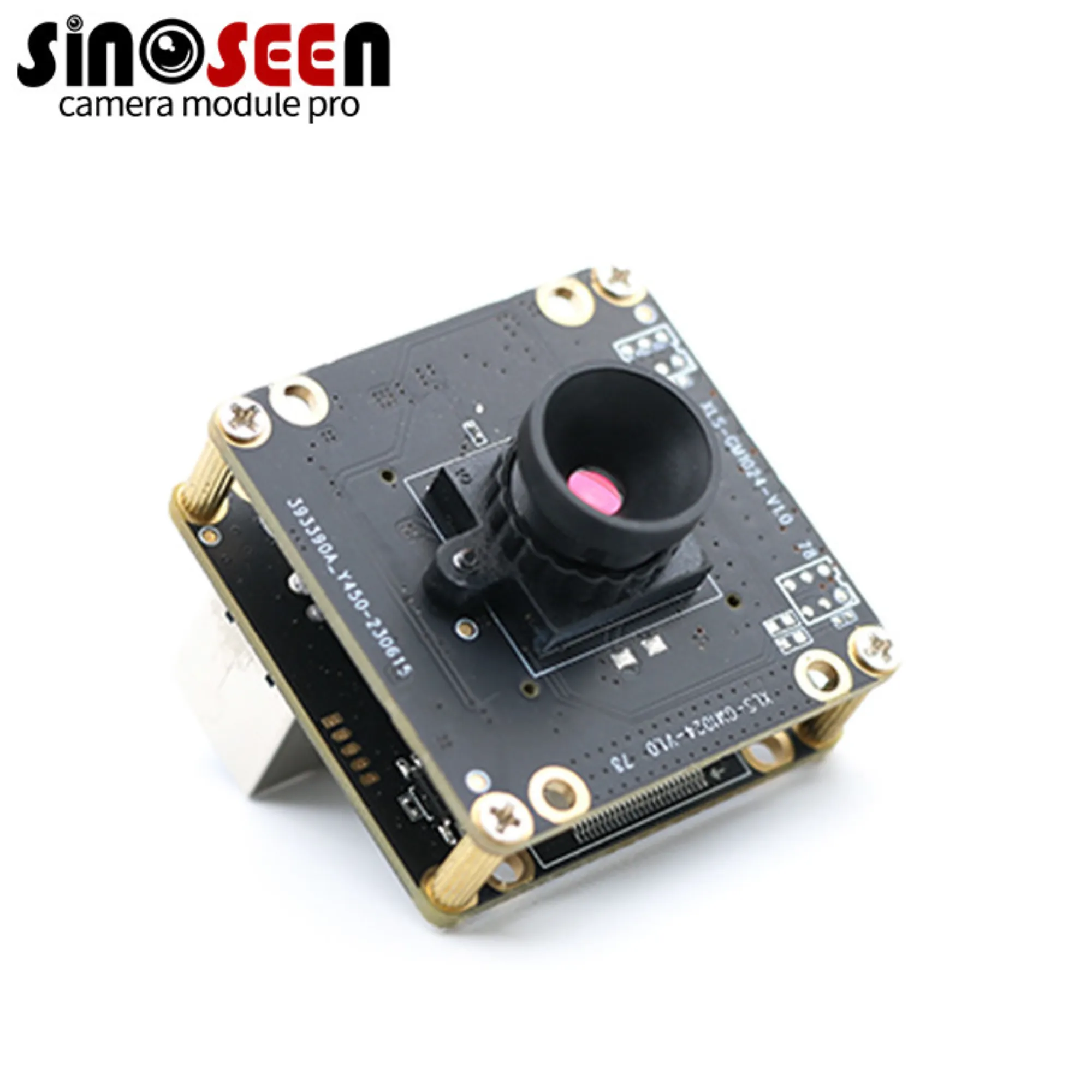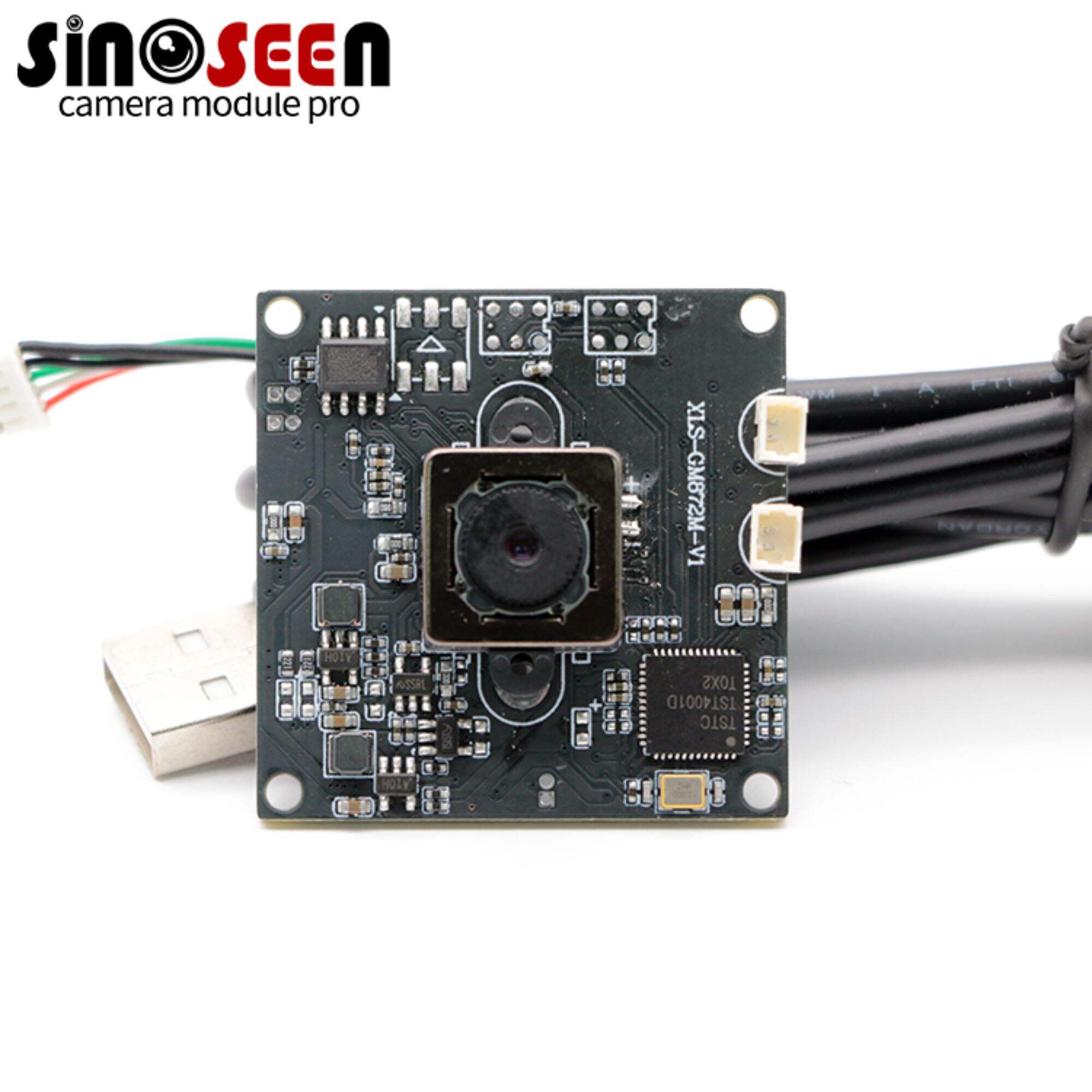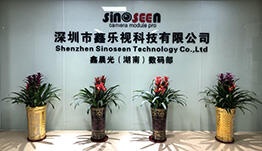מה ההבדל בין מודול המצלמה IMX415 ו-IMX678?
פירוק תכונות טכניות
הבדלי רזולוציה וגודל פיקסל
רזולוציה וגודל פיקסל ממלאים תפקיד חשוב בקביעת איכות התמונה שמייצרים חיישני מצלמה כמו ה-IMX415 וה-IMX678. ה-IMX415 מציע רזולוציה מקסימלית של 8.3 מגה פיקסל, ומציע וضوح מרשים ליישומים המחייבים פרטים מדויקים. לעומת זאת, ה-IMX678 ממשיך הלאה עם רזולוציה גבוהה יותר, ועונה על דרישות לדיוק גדול בתמונה, מה שמיטיב במיוחד לצילום מקצועי ולמערכות שמראות כוללות.
גודל הפיקסל משפיע גם על איכות התמונה על ידי השפעה על שימור הפרטים ועל ירידת הרעש. גודלי פיקסל גדולים מגדילים לרוב את שימור הפרטים ומקטינים את הרעש, במיוחד בתנאי תאורה נמוכה. הדבר נובע מהיכולת של פיקסלים גדולים יותר לאסוף אור רב יותר, וכך מקטינים את היחס לשיטות שיפור דיגיטליות. מחקרים עדכניים מצביעים על כך שרזולוציות גבוהות, בצירוף גודלי פיקסל אופטימליים, משפרות משמעותית את וضوح התמונה ביישומים פופולריים בצילום, כמו צילום נוף וצילום דיוקן, בהם חשיבות רבה לפרטי תמונה.
גודל החיישן והצורה הפיזית
לממדים הפיזיים של חיישני ה-IMX415 וה-IMX678 יש השלכות חשובות על השימושיות והשלמה שלהם. ה-IMX415, אשר ידוע בצורה הקומפקטית שלו, מתאים להתקנה במכשירי מידה קטנים יותר, כגון טלפונים חכמים ומצלמות ספריות קומפקטיות. הגודל הקטן הזה מגביר את הגמישות במונחי עיצוב ו triển deployment של המכשיר, במיוחד באלקטרוניקה בה חיסכון במקום הוא קריטי.
לעומת זאת, ה-IMX678, בפקטור צורה מעט גדול יותר, מוצא את עerkho בחברות יציבות יותר כגון מצלמות מקצועיות ומערכות אבטחה. גודל החיישן הגדול באופן פוטנציאלי מאפשר קליטת אור טובה יותר, ולכן שיפור באיכות התמונה, במיוחד בתנאי תאורה משתנים. מומחי תעשייה מדגישים את חשיבות גודל החיישן בפיתוח חיישנים, ומסבירים כי בעוד שחיישנים קטנים מתאימים לעיצובים קומפקטיים, לחיישנים גדולים יש לעתים קרובות יתרונות בבירור תמונה. האיזון בין גודל לביצועים הוא היבט מהותי שכל יצרן שוקל בשלב העיצוב.
יכולות קצב המסגרות (90 fps מול קצבי אופטימיזציה בינה מלאכותית)
בנוגע ליכולות קצב המסגרת, ההבדלים בין ה-IMX415 ל-IMX678 הם מפתח ליישום הפוטנציאלי שלהם. ל-IMX415 יש קצב מסגרת מירבי של 90 fps, מה שמתאים אותו ללכידת פעולה מהירה, ולכן הוא ברירת המועד לספורט או שידור משחקים. הקצב הגבוה של המסגרת מבטיח ניגון חלק וחופשי מהפרעות, מה שקריטי בסצנות דינמיות.
המarchs של אופטימיזציה בקצב המסגרת, כפי שנראה ב-IMX678, משנה את הביצועים על ידי התאמת קצב המסגרת באופן דינמי לצרכים הספציפיים. קצבי מסגרת עם אופטימיזציה באמצעות בינה מלאכותית יכולים לשפר משמעותית את היעילות במהלך סדרות פעולה מהירות על ידי אופטימיזציה עומס העיבוד וצריכת החשמל. ראיות מאוספי בדיקה מצביעות על כך שקצבים גבוהים יותר, בצירוף אופטימיזציה בינה מלאכותית, מציעים חוויית צפייה חלקה יותר, דבר שמתקבל בברכה בסביבות של משחקי מחשב וספורט חי.
תמיכה ב-HDR ובטווח דינמי
תמיכה בטווח דינמי גבוה (HDR) היא חיונית להקלטת סצנות באור שונה, וכמו כן גם ה-IMX415 וה-IMX678 מציגים יכולות משביעות רצון בכיוון זה. הטכנולוגיה של ה-IMX415 מאפשרת לו לנהל הבדלים משמעותיים בין אזורים מוארים ואפלים, מה שמאפשר צילום חייתי ומאוזן יותר. בינתיים, ה-IMX678 ממשיך הלאה ומציע יכולות טווח דינמי מתקדמות, תוך התאמה לתנאי תאורה קיצוניים בדיוק רב יותר.
לא ניתן להגזים באפקט של HDR על איכות שעתוק התמונה, במיוחד בסביבות שבהן תאורה יכולה להשתנות בפתע, כמו צילום באורח חיצוני ותיעוד במגרשי ספורט. טווח דינמי מתקדם מבטיח ששמר על פריטים בחשכה ועל הבהירות, מה שמוביל לתמונות מציאותיות יותר. יישומים פרקטיים שהושפעו באופן משמעותי כוללים צילום נוף, שם רכיבי הטבע מציגים טווח רחב של בהירות, וטכנולוגיית HDR מווסתת שכל הרכיבים נקלטים בדיוק, תוך מתן חוויית ראייה מפוארת.
השוואת ארכיטקטורת חיישנים וטכנולוגיית פיקסלים
IMX415: עיצוב CMOS מחובר
עיצוב ה-CMOS המוערם בחיישן IMX415 מציע יתרונות משמעותיים מבחינת ביצועים ויעילות. ארכיטקטורה חדשנית זו מאפשרת הפחתה ניכרת בגודל הפיקסלים תוך שמירה על רזולוציה גבוהה, חיונית ליישומים מוגבלים במקום. עיצוב המוערם לא רק משפר את בהירות התמונה אלא גם משפר את המהירות ויכולות העיבוד. מחקרים המשווים מודעות מרחבית מראים כי ארכיטקטורה זו משפרת את דיוק המעקב בסביבות דינמיות. טכנולוגיית ה-CMOS המוערם של IMX415 מאפשרת איכות תמונה מעולה גם בתאורה מאתגרת, מה שהופך אותו לאידיאלי עבור יישומים מגוונים.
IMX678: מבנה BSI מואר מאחור
המבנה המואר מאחור (BSI) בсенסר IMX678 מספק יתרונות בולטים, במיוחד בתנאי תאורה נמוכה. טכנולוגיית ה-BSI מציבה את הדיודה הפוטואלקטרית קרוב יותר לפני השטח, ובכך מקסמת את איסוף האור ומשפרת את רגישות הסנسر. התוצאה היא שיפור משמעותי בביצועים, במיוחד בתאורה עמומה שבה סנסרים מסורתיים מתקשים להתמודד. ביקורות מומחים הדגימו באופן עקבי את היכולת של הסנسر מסוג BSI לספק תמונות בהירות וברורות בתנאי אור נמוך. עבור תחומים התלויים בתצפית בלילה או בתאורה מוגבלת, המבנה של ה-BSI ב-IMX678 מהווה טרנדסטר, ומוביל מבחינת ביצועים באור חלש.
השפעת גודל הפיקסל על רגישות לאור
גודל הפיקסל הוא גורם מרכזי בקביעת רגישות הסנסור לאור וברורות התמונה, במיוחד בסביבות אור חלש. פיקסלים גדולים יותר יכולים לספוג יותר אור, מה שמשפר את הרגישות ומקטין את הרעש, וכך מתקבלת תמונה ברורה ומדוקדקת יותר. יעילות קוונטית, המדדת את היכולת של הסנסור להפוך פוטונים לאלקטרונים, קשורה ישירות לגודל הפיקסל, כאשר לפיקסלים גדולים לרוב יש ביצועים טובים יותר. מחקרים עדכניים בביצועי תאורה מצהירים כי גם סנסור ה-IMX415 וגם סנסור ה-IMX678 נהנו ממימדים אופטימליים של פיקסלים, מבטיחים ביצועים גבוהים גם בתנאי תאורה זעירים. התקדמויות אלו מדגישות את הקשר החיוני בין גודל הפיקסל לברורות התמונה, עם התאמה למגוון אתגרי תאורה.
ביצועים באור חלש וניתוח טווח דינמי
טכנולוגיית PLNC של IMX415 לייזור לילה
ה-IMX415 משתמש בטכנולוגיית שליטה בזווית רעש ליניארית (PLNC), מה שמשפר משמעותית את יכולות הראייה הלילית שלו. טכנולוגיית PLNC מפחיתה באופן יעיל רעש בתנאי תאורה נמוכה, ומאפשרת תמונות בהירות וחדות יותר, מה שהופך אותה למושלמת לשימוש בפיקוח וצפית תפעולית בלילה. משוב ממגזרי תעשייה, כמו פיקוח חכם ואוטומציה תעשייתית, מדגיש את הביצועים המרשימים של החיישן ביישומים ליליים. שיפור זה מדגיש את היתרון התחרותי שלו על פני טכנולוגיות ישנות יותר. שיפורים עדכניים בטכנולוגיית ראייה לילית תומכים עוד יותר בتفوقו של ה-IMX415, ומציגים את האופן שבו הוא עולה על טכנולוגיות אחרות בסיטואציות הדורשות רגישות גבוהה, על ידי איזון יעיל בין רזולוציה וראייה בתנאי תאורה נמוכה.
רגישות צבעונית מתקדמת של IMX678
בנוגע לאופטימיזציה של רגישות לצבעים בסביבות חוסר אור, ה-IMX678 בולט במיוחד. על ידי מתן עדיפות לדיוק בצבעים, חיישן זה נפוץ בקרב משתמשים מקצועיים כמו במובי סרט ובפיקוח אבטחה. בהשוואה למוצרים מסחריים מתחרים, ה-IMX678 מצטיין במדדי דיוק בצבעים, ומבטיח שהצבעים בתמונות תישארו חיים ואמיתיים גם בתנאי תאורה עמומה. מחקרים העוסקים בתפיסת צבע בתנאי תאורה שונים חושפים את יעילות החיישן בשמירה על נאמנות הצבע, ומספקים למקצועי בתחום ביצועים מהימנים ללא תלות בשינויים בסביבת התאורה. כל זאת הופך את ה-IMX678 לבחירה המועדפת ביישומים בהם יצוג הצבע קריטי.
השוואות SNR בתנאי תאורה מאתגרים
בתחום הביצועים של חיישנים, יחס האות לרעש (SNR) הוא מדד קריטי, במיוחד בתנאי תאורה נמוכה. הבנת ה-SNR עוזרת לנו להעריך עד כמה חיישן מסוגל להבחין בין אות לרעש בסביבות תאורה מאתגרות. נתונים השוואתיים של SNR מראים כי גם ה-IMX415 וגם ה-IMX678 מציגים ביצועים ausgezeichnetים בסצנות כאלו. עם זאת, ה-IMX415, עם טכנולוגיית ה-PLNC שלו, לרוב מציג מדדי SNR מובילים יותר, ומאפשר תמונות ברורות יותר עם רמות רעש מופחתות. מבחני תקן תעשייתיים מאשרים ממצאים אלו, ומציגים כי ה-IMX415 שומר על SNR גבוה יותר תחת מגוון תנאי תאורה, מה שהופך אותו לאפשרות אמינה עבור סביבות הדורשות צילום ביצועי בגובה העיניין בתאורה נמוכה.
על ידי שיפור שיטתי של כל חיישן בטכנולוגיות ממוקדות, שני החיישנים IMX415 ו-IMX678 משרתים צורך שונה, ומבטיחים למשתמשים למצוא פתרון אידיאלי המתאים לצריכי הצילום הספציפיים שלהם.
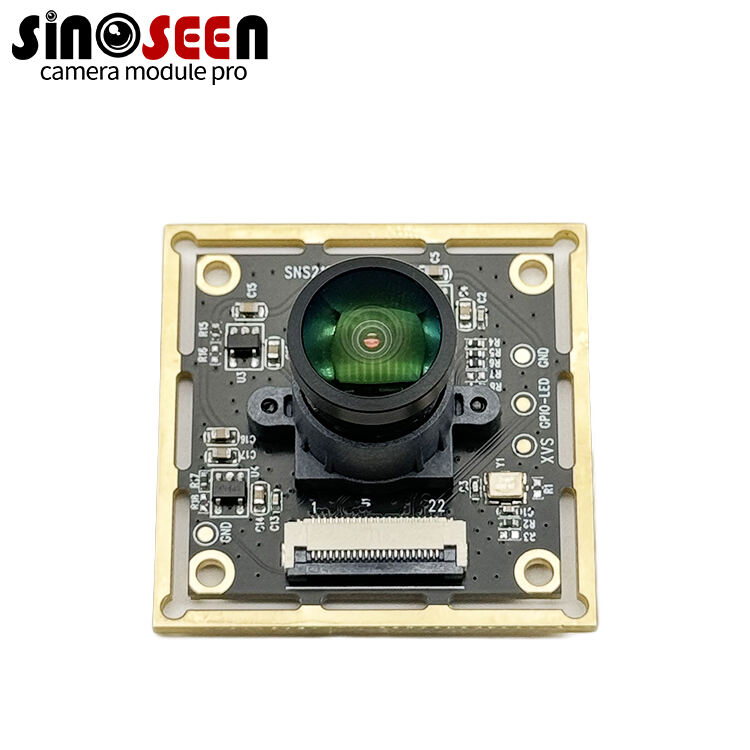
אופטימיזציה באמצעות בינה מלאכותית ומקרי שימוש מיוחדים
ה-HDR של IMX678 למצלמות תעשייה וראייה מכאנית
האינטגרציה של חיישן ה-IMX678 בסביבות תעשייתיות מציגה יעילות מרשימה, במיוחד בזכות יכולות ה- High Dynamic Range (HDR) שלו. תכונה זו היא קריטית שכן היא משפרת את ביצועי ראייה ממוחשבת על ידי שיפור הראות בתנאי תאורה משתנים. דוגמאות מהעולם האמיתי מדגישות את ההשפעה; למשל, מפעל לייצור חומרים צילק ביצוע שיפור של 20% בדיוק זיהוי פגומים לאחר אימוץ החיישן IMX678. ניתוחים מקצועיים מדגישים גם הם את תפקיד ה-HDR באפיון חד וברור של סצנות בהבדל בהירות גבוה, וכך מאששים את יעילותו בפיענוח תהליכי בדיקה ובחיזוק היעילות התפעולית.
IMX415 במערכות אבטחה ושמרטוט
חיישן ה-IMX415 נבנה במטרה לשכלל מערכות אבטחה, והוא מצטיין בסביבות אור נמוך ומבטיח כיסוי מקיף. את возможויותיו הדémonstrate שימושו על ידי חברות אבטחה מתקדמות שמדווחות על שיפורים משמעותיים ברורים בזיהוי בלילה ובדיוק הגילוי. מדדי תפעול מצביעים על ירידה של 30% באירועי חדירה שלא זוהו או פספסו בעת שימוש במערכות מבוססות IMX415. דוחי תעשייה מדגישים גם את ההתקדמות המתמשכת בטכנולוגיות שמראות, כאשר ה-IMX415 עומד בפנימה בשל הביצועים החזקים שלו והתאמה שלו לתנאי סביבה חיצוניים משתנים.
יכולות הפחתת רעש רב-מסגרתיות
שני החיישנים IMX415 ו-IMX678 מנצלים טכניקות של הפחתת רעש מרובה מסגרות כדי להפחית באופן יעיל את רעש התמונה, מה שקריטי לתמונות באיכות גבוהה בסביבות מגוונות. מבחנים הראו שהתехнологיה הזו מפחיתה רעש עד 40%, ומגביר את וضوح התמונה בצורה ניכרת. ההתvergence האסטרטגית של נתוני מסגרות מרובות עוזרת לשמרמות של פרטים, במיוחד בתנאי תאורה קשים. מומחים בתחום הצילום משבחים את הטכנולוגיה הזו, ומסבירים את התאימות שלה ללכידת תמונות ברורות בתנורי אור נמוך מבלי לפגוע באיכות התמונה, מה שהופך אותה לכלי חיוני עבור צלמים.
הכנה לעתיד עם מודול מצלמה טכנולוגיה
מגמות בהפחתת גודל החיישנים
המגמה למזעור חיישנים משפיעה רבות על עיצוב וביצועים של מכשירים מודרניים. ככל שחיישנים נעשים קטנים יותר, שילובם באלקטרוניקה לצרכן הופך להיות פחות פולשני ויעיל יותר, מה שמאפשר עיצובים חלקים וקומפקטיים יותר. המגמה הזו משמעותית במיוחד במכשירים כמו טלפונים חכמים וטכנולוגיות ישיבה, שבהן נפח הוא פריט יקר. גודל חיישנים קטן מאפשר למכשירים הללו לשמור על רמות ביצוע גבוהות תוך שמירה על פרופיל נמוך. לפי ניתוח שוק, הביקוש למערכות קומפקטיות נמצא בעלייה, והוא נבע מהעדפות צרכניות למכשורים קלילים ונישאים מבלי להקריב את הפונקציונליות.
התפקיד של בינה מלאכותית בעיבוד תמונות דור הבא
טכנולוגיות בינה מלאכותית (AI) מטילות סדר חדש בעיבוד תמונות, מביאות יכולות מתקדמות למודולי מצלמה דור הבא. בעזרת למידת מכונה וראייה ממוחשבת, הבינה המלאכותית משפרת את איכות התמונה באמצעות יכולות כגון זיהוי עצמים בזמן אמת והכרה של סצנות. תחזיות מצביעות על כך שתפקיד הבינה המלאכותית בעיבוד תמונות ימשיך להתרחב, מה שיוביל למצלמות מתקדמות ויעילות יותר. מומחים ממוסדות מחקר מובילים בתחום הבינה המלאכותית מדגישים כי התקדמות בתחום זה צפויה להניע את פיתוח דגמי עיבוד תמונות עתידיים, לאפשר רמות בלתי שגרתיות של דיוק וביצועים. האבולוציה הזו לא רק שמשפרת את חוויית המשתמש, אלא גם מציבה סטנדרט חדש בעיבוד תמונות בטכנולוגיה.
שאלות נפוצות
מהן ההבדלים המרכזים בין חיישנים IMX415 ל-IMX678?
ההבדלים המרכזיים נמצאים בפוקוס, גודל פיקסל, גודל חיישן וטכנולוגיות מתקדמות. ל-IMX415 יש רזולוציה מקסימלית של 8.3 מגה פיקסל והוא מצויד בחיישן קטן שמתאים במיוחד להתקנים קטנים. ה-IMX678 מציע רזולוציה גבוהה יותר וחיישן גדול יותר המתאים ליישומים מקצועיים. לשניהם טכנולוגיות מתקדמות לשיפור איכות התמונה.
איך גודל הפיקסלים משפיע על איכות התמונה?
גודל הפיקסל הוא קריטי לאיכות התמונה כיוון שפיקסלים גדולים יותר יכולים לאסוף יותר אור, להפחית רעש ולשפר את שימור הפרטים. זה חשוב במיוחד בתנאי תאורה חלש, שם פיקסלים גדולים מספקים תמונות ברורות יותר.
למה SNR חשוב לחיישנים?
יחס האות לרעש (SNR) הוא חשוב לצורך בהערכת הביצועים של חיישן בזיהוי אות مقابل רעש. SNR גבוה יותר פירושו תמונות חדות יותר ורעש פחות, מה שקריטי בסביבות תאורה מאתגרות.
אילו יתרונות מביאה אופטימיזציה באמצעות בינה מלאכותית לחומרים📷 חיישני מצלמה?
אופטימיזציה באמצעות בינה מלאכותית מגבירה את קצב העקורים ועיבוד התמונה על ידי התאמה דינמית של הביצועים לצרכים הספציפיים, מפחיתה עומס על המעבד וצריכת חשמל תוך שיפור חוויית הראייה.
איך תכונות ה־HDR משתלבות בсенסורים לתמונה?
הטכנולוגיה של HDR מגבירה את הטווח הדינמי, מבטיחה תמונות מאוזנות וחיות יותר בסביבות עם תאורה משתנה, כגון צילום או הקלטה באורח פנים. היא קולטת פרטים בחשכה וגם באור בהירות.
מוצרים מומלצים
חדשות חמות
-
סין מובילה יצרנים מודול מצלמה מכשיר כוח צילוםSinoseen
2024-03-27
-
המדריך האולטימטיבי להתאמה אישית עבור מודולים מצלמת OEM
2024-03-27
-
הבנה מעמיקה של מודולי מצלמה
2024-03-27
-
איך להפחית את רזולוציית מודול המצלמה?
2024-12-18

 EN
EN
 AR
AR
 DA
DA
 NL
NL
 FI
FI
 FR
FR
 DE
DE
 EL
EL
 HI
HI
 IT
IT
 JA
JA
 KO
KO
 NO
NO
 PL
PL
 PT
PT
 RO
RO
 RU
RU
 ES
ES
 SV
SV
 TL
TL
 IW
IW
 ID
ID
 SR
SR
 VI
VI
 HU
HU
 TH
TH
 TR
TR
 FA
FA
 MS
MS
 IS
IS
 AZ
AZ
 UR
UR
 BN
BN
 HA
HA
 LO
LO
 MR
MR
 MN
MN
 PA
PA
 MY
MY
 SD
SD

